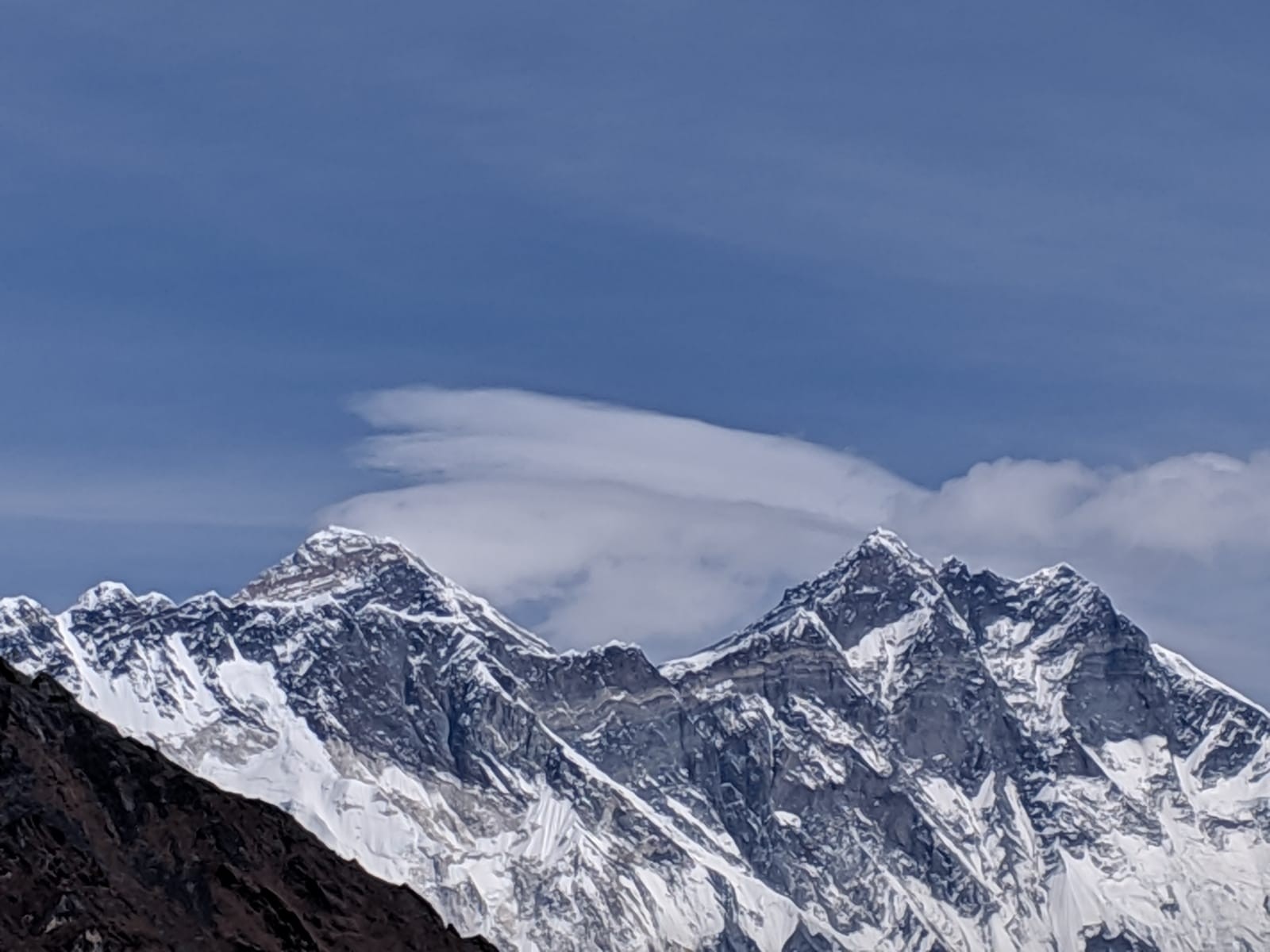Everest Base Camp trekking the name itself excites the trekkers because they are in the land of the highest peak Everest. Everyone wants to experience how it feels to travel the lap of the highest peak in the world. Everest Base Camp Trekking is one of the most exciting and popular trekking routes all over the world. Everest Base Camp Trekking is full of natural scenarios, thrills, difficulties as well and fun which is enough to create memories that will be enough for your lifetime.
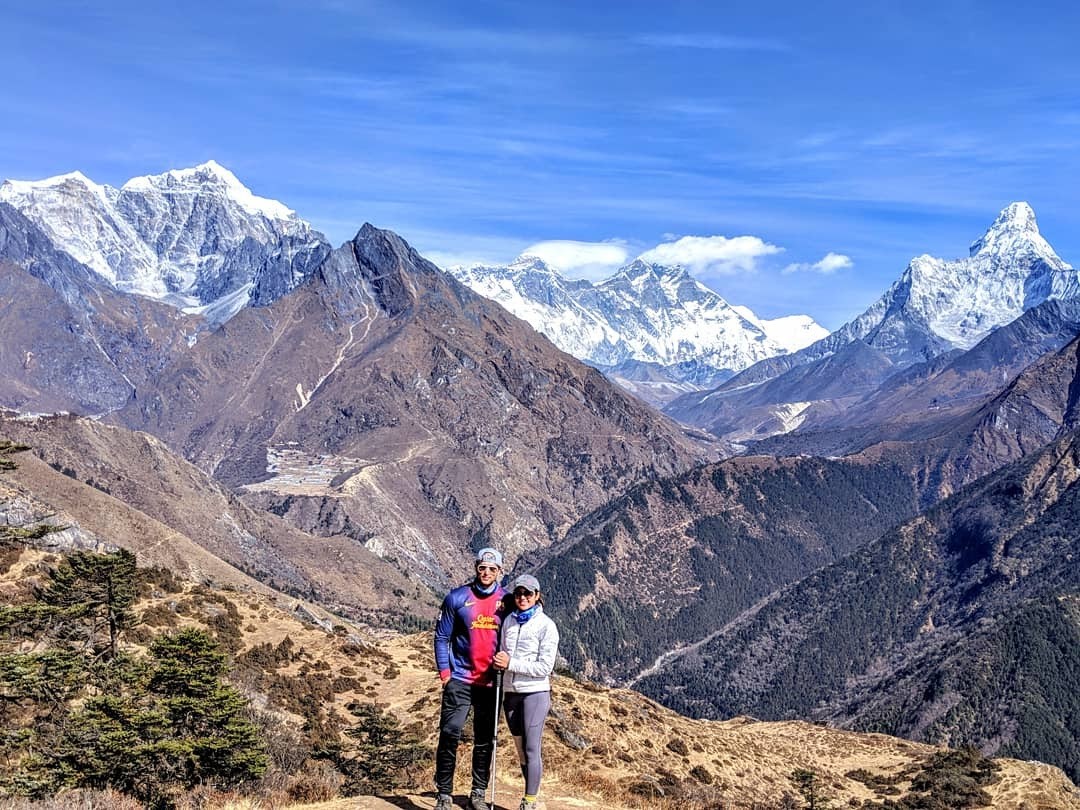
EBC Trek Itinerary
Day 01: Arrival in Kathmandu (1,350m/4,428ft)
Day 02: Kathmandu: Sightseeing and trek Preparation
Day 03: Fly to Lukla, trek to Phakding (2,651m/8,700ft): 40min flight; 8km, 3 - 4 hours trek
Day 04: Phakding to Namche Bazaar (3,438m/11,280 ft): 11km, 5 - 6 hours
Day 05: Acclimatization Day - Namche Bazaar: (3,440m/11,284ft)
Day 06: Namche Bazaar to Tengboche (3,870m/12,694ft): 10km, 5- 6 hours
Day 07: Tengboche to Dingboche (4,360 m/14,300 ft): 9km, 5 - 6 hours
Day 08: Dingboche: Acclimatization
Day 09: Dingbocheto Thukla (4,600 m/15,090 ft): 4km, 3 - 4 hours
Day 10: Thukla to Lobuche (4940 m/16,207 ft): 4km, 2 - 4 hours
Day 11: Lobuche to Gorakshep (5170 m/16,961ft), visit Everest Base Camp (5364 m/17,594): 13km, 6-7 hours
Day 12: Gorakshep to Kala Patthar (5,545m/18,192ft) to Pherice (4,288m/14,070ft): 16km,7-8 hours
Day 13: Pheriche to Namche Bazaar (3,440m/11,280 ft): 20km, 6 - 7 hours
Day 14: Namche Bazaar to Lukla (2,860m/9,186ft): 19km, 6 - 7 hours
Day 15: Fly to Kathmandu
Day 16: Final departure.
Detail Information on Everest Base Camp Trekking
Arriving at the international airport in Kathmandu, you are picked up by the staff of your respective travel company. They will take you to the hotel to spend the night. you spend a day looking around for the necessary gear for trekking and sightseeing. The staff from the company will get you the trekking permit necessary for the trek. The day before you leave for Lukla you will be given information about the trek by the guides.
You will leave for Kathmandu airport early in to catch the flight to Lukla case if you are lucky enough then you will get the flight on the same day and if not then you have to wait for another day. The flights from Kathmandu to Lukla were canceled or delayed due to the weather conditions. Lukla is the first destination of the trek, there is a small domestic airport in Lukla which is also known as Tenzing Hillary Airport. This airport is labeled as the most thrilling and exciting in the world because of its short runway as well as its location between the mountains. The flight to Lukla is exciting because of the scenarios you see during the flight. If the weather is clear can see the breathtaking views of mountain ranges as the plane flies to those ranges.
After landing at Lukla you will take the first real step to start your journey to Everest Base Camp. Lukla is also known as the gateway to Everest because it is where the Everest Base Camp Trekking starts. From Lukla, you start to walk for Phakding and after walking 3-4 hours you reach Phakding. Passing through the Sherpa villages passing by the monasteries and prayer flags you reach the destination. The trail to Phakding from Lukla is simple and easy.
Another day your destination is Namche Bazaar and after 5-6 hours of walking passing through many suspension bridges on the way you reach Namche Bazaar. Before reaching Namche you enter Sagarmatha National Park and from there, you follow the steep trail to Namche. Namche Bazar is fully occupied by Sherpa settlement where we can see the real lifestyle, culture, and tradition of the Sherpa's living in the higher Himalayas. Namche Bazar is the main business point of this area where you can find any kind of luxury you want. Here facilities are similar to the capital Kathmandu such as quality restaurants, hotels, lodges, shops, money exchange services, etc.
The next day is acclimatization in Namche Bazaar it means the trekkers are kept at Namche for a day to adjust to the environment. They spend the day with a small trek to Everest View Hotel which is located at the highest altitude in the world. Some spend their day by traveling to the Syangboche airstrip above the hill to see the panoramic view of Namche Bazaar. Some are interested to visit from where the view of the Everest and other peaks are seen. From the national park visit, they can collect information about the conserved species inside this region. Some just hang around and collect information about the Sherpa settlement along with their culture and traditions.
In the morning you start your trekking for Tengboche, through the trail in the side of the Dudh Koshi River. The trail to Tengboche provides magnificent views of clear water as well as mountain ranges. Tengboche is a small village surrounded by rhododendron hills and this village is famous for Tengboche monastery. The monastery of Tengboche is the largest monastery of the Khumbu region. Inside the monastery, there is a 20-foot sculpture of Buddha and the musical instruments and robes of the Lamas. The trekkers will get a chance to observe a prayer ceremony either in the evening or in the morning.
After an overnight stay at Tengboche, your destination for the day is Dingboche. is also known as the summer valley of Khumbu crossing the Imja River through the suspension bridge. The journey from Tengboche to Dingboche will take 5-6 hours.
In Dingboche, you are for acclimatization and you can spend your day by a trek to Nagarjuna. From the top of Naagerjun, you can see the panoramic view of peaks like Lobuche, Thamersu, and Amadablam. Also, you can see the breathtaking view of Pheriche valley. Later returning to Dingboche you can take a sunbath and rest for the day relaxing and making yourself for the next day adventure.
On other days you start your journey to Lobuche and it takes 7-8 hours to reach Lobuche from Dingboche. On the way to Lobuche, you can find a trekkers aid post which is established for the treatment of the trekkers if needed. On the way to Lobuche, you will pass across Chola Lake in Thukla. Some trekkers will stay overnight in Thukla and move for Lobuche the next day.
From Lobuche, you trek for Gorakshep and Everest Base camp the next day and the journey will be 6-7 hours. Gorakshep is a place for an overnight stay with some lodges, from Gorakshep, you trek to Everest base camp. From the Base camp, you can see the mysterious view of mountain ranges.
You return to Gorakshep to spend the night, early in the morning you walk to Kala Patthar as Kala Patthar is famous for its sunshine view. After the sun shines early in the morning it changes the color of the mountains from silver to white. Kala Patthar also provides a panoramic view of Mount Everest, Nuptse, Chagatse, Lhotse and the Pumori, and many other peaks.
After spending some time in Kala Patthar you return to Gorakshep and move for Pheriche. The journey from Gorakshep to Kala Patthar and Kala Patthar to Pheriche takes about 7-8 hours. Leaving the mountains behind, the trails you away from the Everest Base Camp through Pangboche and Tengboche. You start your journey to Namche which is 6-7 hours. This your last day of trekking during Everest Base Camp Trekking as you return to Lukla where the began.
You start for Lukla from Namche traveling downwards through steep trails. On the way you through the likes of Dudhkoshi, suspension bridges, Mani-stone walls, villages, and forests pine and rhododendrons. Some choose to stay at Phakding between the Namche Bazaar and Lukla. The journey from Namche to Lukla is about 6-7 hours of trek. Arriving at Lukla you can some time roaming around and celebrating the success of the Everest Base camp trek. That night spend your time with your friends and guides before flying Kathmandu the next day.
Leaving behind the Everest region you fly from Lukla to Kathmandu enjoying the views of the mountains. After landing in Kathmandu the staffs of the company will take you back to the hotel. After resting for some time you will meet your company's staff. If you want to spend some more time in Nepal then you can discuss the possible destination with them. If the staffs of the company will drop you to the International Airport for your departure flight from Nepal.
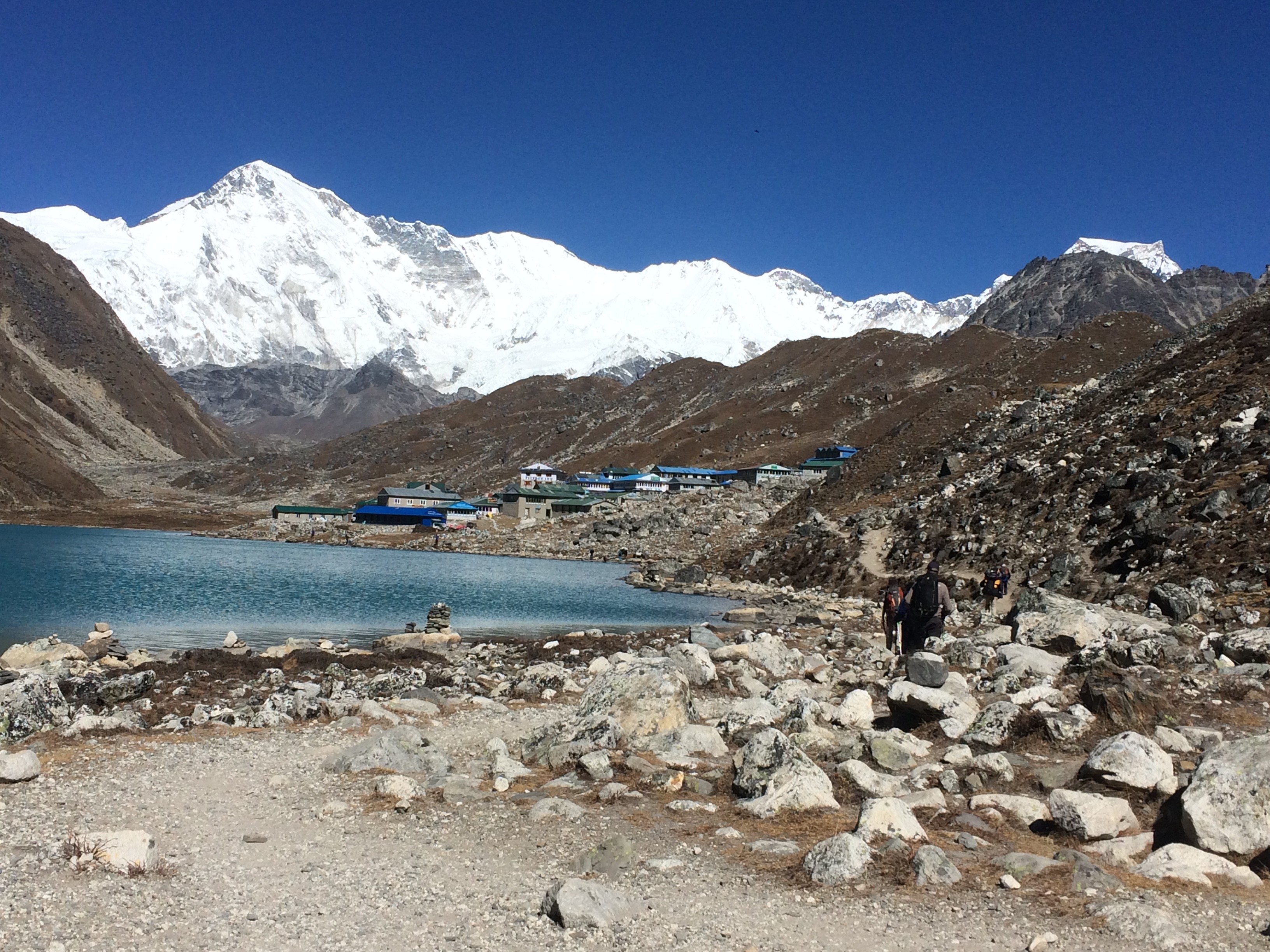
Everest Gokyo Lake Trek
Gokyo Lake Trek is another famous trekking route within the trail of Everest Base Camp Trekking. This route will provide you the chance to explore the beauty of the Gokyo lakes as well as Gokyo Valley. Also, you can ascend the peak of Gokyo RI for a more amazing view of the Lake Valley.
Everest Gokyo Lake Trek Itinerary
Day 01 – Arrive in Kathmandu (1,400 m).
Day 02 – Guided Sightseeing in the Kathmandu Valley.
Day 03 – Fly to Lukla (2,804 m) and Trek to Phakding (2,610 m) – 3 hours.
Day 04 – Phakding to Namche Bazaar (3,441 m) – 5.5 hours.
Day 05 – Namche Bazaar Acclimatization Day.
Day 06 – Namche Bazaar to PhorsteThanga (3,680 m) – 5 hours.
Day 07 – PhorsteThanga to Machhermo (4,470 m) – 5 hours.
Day 08 –Machhermo to Gokyo (4,790 m) – 5.5 hours.
Day 09 – Gokyo to Gokyo Ri (5,483 m) and Back to Gokyo – 5 hours.
Day 10 – Gokyo to Thaknak (4,500 m) – 4 hours.
Day 11 – Thaknak to cross (5,300 m) and Trek to Dzongla (4,710 m) – 7 hours.
Day 12 – Dzongla to Lobuche (4,910 m) – 4 hours.
Day 13 – Lobuche to Gorakshep and Everest Base Camp (5,365 m) and then Back to Gorakshep (5,180 m) – 8 hours.
Day 14 – Gorakshep to Pheriche Hike Up to Kala Patthar (5,555 m) early in the Morning and Trek Down to Pheriche (4,200 m) – 7 hours.
Day 15 – Pheriche to Namche Bazaar (3,441 m) – 7 hours.
Day 16 – Namche Bazaar to Lukla (2,804 m) – 6 hours.
Day 17 – Morning Flight from Lukla to Kathmandu.
Day 18 – Leisure Day and Farewell Dinner in Kathmandu.
Day 19 – Transfer to the International Airport for Your Final Flight Departure.
Detail Information on Everest Gokyo Lake Trek
This route provides you an alternative if you want to explore more of the Everest Region. This will divert from Namche Bazar leaving behind the route towards Tengboche you will move further to Phortse. After walking 5-6 hours from Namche you will reach Phortse, The next day early in the morning you start your journey to Mochhermo. The journey for the day is about 5 hours through the steep trail and overnight in Mochhermo.
Early morning you start for Gokyo through the ups and downs and passing the valley of Kangtaiga and Pangkha. On the way, you trek looking at the views of Cho Oyu, Cholatse, and other mountains. Reaching Gokyo resting for some time that day you will roam around to see the Gokyo Lakes. Climbing a hill you see the magnificent view of Ngozumpo Glacier- the longest glacier in Nepal. After looking at the lakes and having the view of Ngozumpo Glacier through the hills you return to spend a night at teahouse. The trekking from Mochhermo to Gokyo is about 4-5 hours.
Another day you start to walk towards Gokyo RI. Gokyo Ri is a small peak from where you can see the breathtaking views of Gokyo Lakes and villages of the Gokyo Valley. Also, you can see the view of four of the seven highest peaks in Nepal Cho Oyu, Everest, Lhotse, and Makalu. After viewing the beautiful mountains we return to Gokyo and spend the night there.
After spending the night in the morning you start for Thaknak and reach the destination after 3 hours of walk. There is nothing specific at this point. You spend the day resting and preparing yourself for the challenging journey the next day.
From Thaknak next morning you will move towards Dzongla, the journey for the day will be about 7 hours. On the way, you need to pass through the steep trail covered in snow to ascend the Chola Pass. The difficult journey up the pass offers you some beautiful views around including that of AmaDablam. Crossing the pass you will reach Dzongla where you will stay to spend your night.
Next day early in the morning leaving Dzongla behind you will move through the easy trail towards Lobuche. The trail from Dzongla will lead to join the main route of Everest Base Camp Trekking Route at Lobuche. The journey from Dzongla to Lobuche is about 4 hours.
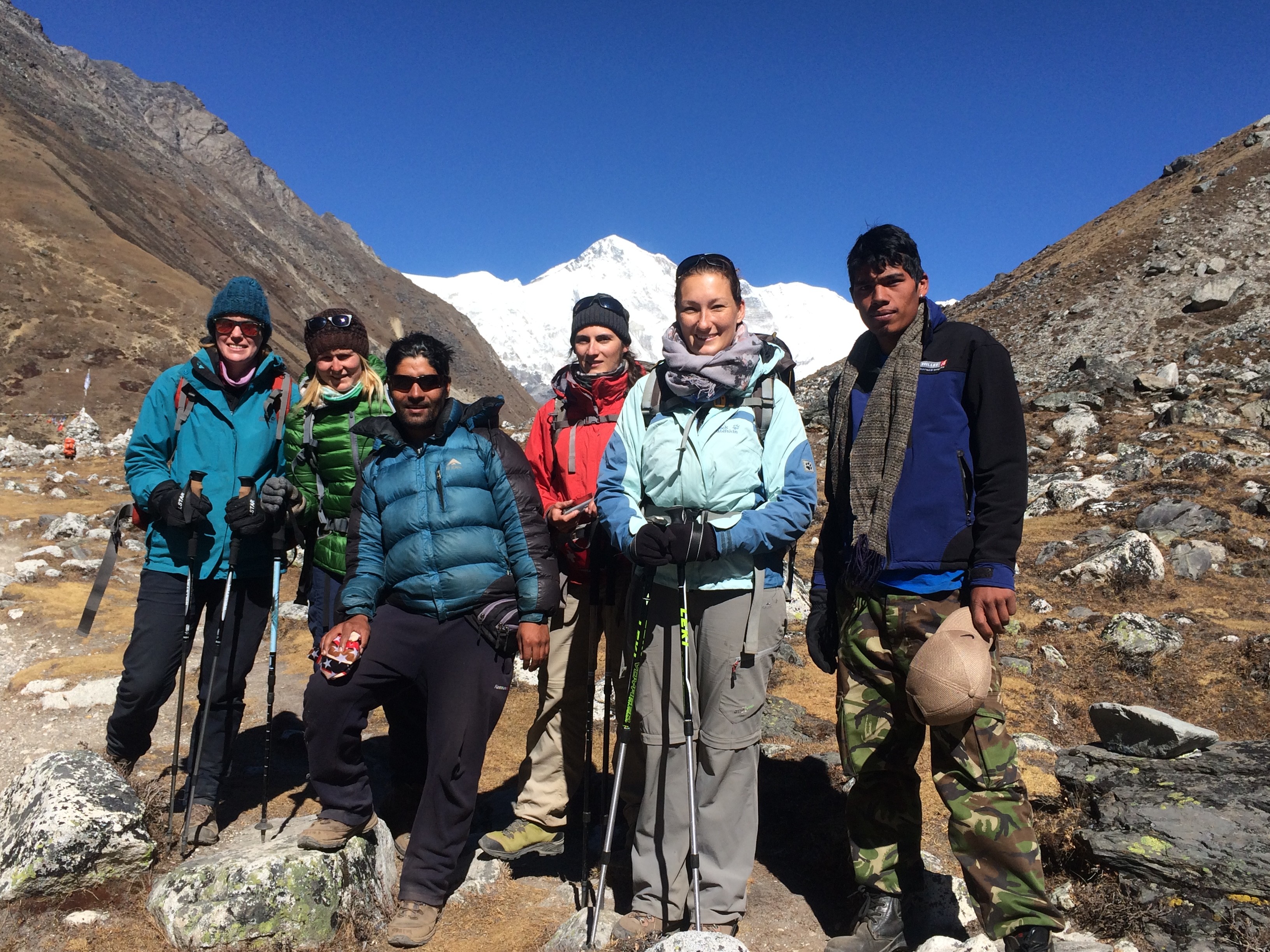
Jiri Everest Base Camp Trekking and Chola Pass Gokyo Lake Trek
Jiri - Everest Base Camp Trekking route will provide you with an alternative way to reach Lukla from Kathmandu. If you want to explore more of this beautiful country then you can choose this route to Everest Base Camp Trekking. To trek through this route you should be fit both mentally and physically. This route is difficult due to various ups and downs, narrow trails, dense forests, and fast-flowing rivers. The difficulties in the trekking trail make the trek more adventurous. This route will take a longer time to complete the trek than of Lukla-Everest Base Camp Trekking route.
Jiri-Everest Trekking Route was the main route to ascend the Everest earlier. Later with the construction of airports in Lukla, this route fell in the secondary choice of the trekkers. But still many of the trekkers who want to experience more of the wilderness and adventure choose this route to reach Lukla.
Jiri Everest Base Camp Trekking and Chola Pass Gokyo Lake Trek Itinerary
Day 1: Arrival in Kathmandu.
Day 2: Full Day Guided Sightseeing Tour in Kathmandu Valley by private van.
Day 3: Drive from Kathmandu to Shivalaya 1790m/8-9 hours via Jiri,
Day 4: Trek from Shivalaya to Bhandara 2190m/4 hours,
Day 5: Bhandara to Sethe 2985m/6-7 hours,
Day 6: Sethe to Junbesi 2700m/7-8 hours,
Day 7: Junbesi to Nunthala 2194m/6-7 hours,
Day 8: Nunthala to Bupsa 2340/5-6 hours,
Day 9: Bupsa to Surke 2290m/5-6 hours,
Day 10: Surke to Phakding 2610m/4-5 hours,
Day 11: Phakding to NamcheBazzar 3440m/5-6 hours,
Day 12: Acclimatization Day, Hike to Everest and the trip to Khumjung and Khunde village for visiting Monasteries:
Day 13: Namche Bazaar to Tengboche 3860m/4-5 hours,
Day 14: Tengboche to Dingboche 4410m/4-5 hours,
Day 15: Acclimatization day, the Side trip to Chhukhung-Ri 5546m
Day 16: Dingboche to Lobuche 4910m/4-5 hours,
Day 17: Lobuche to Gorakshep 5140m/2-3 hours & the trip to Everest Base Camp 5360m/3-4 hours go and back to teahouse.
Day 18: Gorakshep to Dzongla 4830m/4-5 hours,
Day 19: Dzongla to Gokyo 4790m/9 hours & Hike to Fourth Lake
Day 20: Gokyo to Dhole 4120m/4-5 hours,
Day 21: Dhole to Namche 3440m/5-6 hours,
Day 22: Namche to Lukla 2840m/6-7 hours,
Day 23: Fly from Lukla to Kathmandu and transfer to Hotel.
Day 24: Final Departure from Kathmandu.
Detail Information on Jiri Everest Base Camp Trekking and Chola Pass Gokyo Lake Trek
After landing at the international airport in Kathmandu, you are picked up by the staff of your respective travel company. They will take you to the hotel to spend the night. Next day you spend your day in Kathmandu by going sightseeing with the company guide. After sightseeing, you look around for shopping the necessary gear for trekking. The staff from the company will get you the trekking permit necessary for the trek. The day before you leave for Jiri you will be given detailed information about the trek by the guides.
After having breakfast you leave the hotel and take a jeep or public bus for your journey towards Jiri. You will drive towards the countryside from Kathmandu following the road beside the Sunkoshi River. Crossing the rivers, forests, and hill you will gather enough natural scenes before reaching the Jiri.
Talking about Jiri it is a small town in Dolakha district. Jiri is called the Switzerland of Nepal because of geographical similarities. The journey will not stop in Jiri, leaving Jiri behind you will move further towards Shivalaya. The journey from Kathmandu to Shivalaya is 8-9 hours via jeep or bus ride.
From Shivalaya the trekking starts and the destination is Bhandara, the journey is short and it takes 4 hours. You will take rest and spend the night in Bhandara,
After a night in Bhandara, you start moving to Sete village. In between Bhandara and Sete, you move through the trail towards LikhuKhola, crossing the bridge and passing the village of Kinja. After walking 6-7 hours you reach Sete village which is situated in the middle of the forest. Sete is the village of Sherpa settlement where you spend the night.
The next day you start for Junbesi, the trek for the day is going to be difficult. This day you need to climb upwards through the steep trail to ascend the Lamjura pass (3530m). This pass is the highest point between Jiri and Namche Bazar. After ascending the Lamjura pass you climb down towards the Sherpa settlement of Junbeshi. To reach Junbeshi from Sete you need to trek for 7-8 hours passing through a forest covered with rhododendron.
Staying overnight in Junbeshi you start walking for Nunthala and the journey for the day will be of 6-7 hours. Moving ahead from Junbeshi you will reach to Salleri which is a small market in that area. Leaving Salleri behind passing the RingmoKhola you start trekking upwards towards Takshindo La Pass (3100m). After ascending the Takshindo La Pass (3100m) you reach Nunthala to stay that night.
From Nunthala the journey is up to Bupsa and it will take 5-6 hours to reach Bupsa from Nunthala. From Nunthala you move ahead with the view of Karyolung (6511m), Kusum Kanguru (6367m), Gyachung Kang (7952m), Khumbila (5761m), and several other peaks. The trail is rocky and steep downward through the forest towards the Dudh Koshi River. Crossing the suspension bridge we pass through several Sherpa villages like of Jubing and Khari Khola. The village houses are built of stone and you can find many farms and fields in this way. Walking upward and downward all day from Khari Khola again you catch the trail across the stream. The trail will lead you to the settlement at the top of a ridge and that settlement is Buspa. Buspa is the final destination for the day.
There is BuspaGompa in Buspa if you want to visit. The next day you start your trek for Surke and it will take 5-6 hours to reach the destination. Leaving Buspa behind you move forward through the forest covered with pine and oak trees. You will pass Paiya village on the way before reaching Surke. After overnight in Surke the journey towards Phakding starts, on the way you walk through the trails following Dudhkoshi. You will pass the likes of Chaurikharka and various monasteries along with chortens. After trekking for 4-5 hours from Surke you reach Phakding for an overnight stay.
From Phakding the route will join the main route of Everest Base Camp Trekking (LUKLA-PHAKDING-NAMCHE-TENGBOCHE-DINGBOCHE-LOBUCHE-GORAKSHEP-EVEREST BASE CAMP- KALA PATTHAR -PHERICE-NAMCHE-LUKLA)
As we have described the route from Phakding to Gorakshep already above please check the itinerary and detail.
But you can have an alternative way from where you can explore the Gokyo Valley and return to Namche. From Namche, you will walk to Lukla to fly from Lukla airport to Kathmandu.
The alternate route will divert you to Dzongla from Gorakshep leaving the main returning route of Pheriche behind. You need to walk through snowy trails in the ridges of Khumbu Glacier. The journey for the day is difficult due to the snowy, rocky, and steep trails. Later you will pass through the lakes in Thukla and reach Dzongla after walking 4-5 hours for the overnight stay.
From Dzongla you start for Gokyo, the journey for the day will be about 9 hours. You need to pass through the steep trail covered in snow to ascend the Chola Pass. The difficult journey up the pass offers you some beautiful views around including that of AmaDablam. Crossing the pass you will reach Thanknak, some spend a night at Thanknak, and move to Gokyo. Walking the downhill through the slippery trail and passing through the Ngozumpa Glacier you reach Gokyo and spend the night in Gokyo.
Another day early in the morning you will have a small walk around the Gokyo. From the top of the hill, you can see the view of Gokyo Valley, as well as the Ngozumpa Glacier. Leaving the memories of Gokyo behind you start your journey towards Dhole. The 7-8 hours of the journey take you to Dhole passing through the rivers, bridges, and valleys with the view of mountains. You will see the views of Thamserku (6623m) and Kangtega (6782m). In between Gokyo and Dhole, there is Mochhermo, where some trekkers like to spend the night and walk to Dhole next day.
Trekking for 5-6 hours you reach Namche from Dhole. You will pass through the amazing rhododendron and birch forests through the likes of PhortseThanga, Mong-La, Kyangjuma, and other Sherpa villages. On the way to Namche, you will enjoy the amazing view of different mountains.
After spending a night in Namche next day you walk for 6-7 hours to reach Lukla. On the way, you pass through the Sherpa villages, monasteries, trails filled with prayer flags, suspension bridges, and forests covered with rhododendrons.
Arriving at Lukla you spend your night by celebrating the success of Jiri-Everest Base Camp Trekking, via Chola pass and Gokyo.
From Lukla, you catch the flight to Kathmandu and from the airport, you are taken back to the hotel.
The next day you are taken to the airport to catch your return flight.
Everest Three Passes Trek
The Everest Three High Pass Trek is another alternative to the Everest Base Camp Trekking route. This trek is more difficult due to the steep trails through snow and ridges full of rocks and slippery paths. The pass trek provides you with the thrilling and wonderful experience of the high passes within the mountain ranges.
Everest Three Passes Trek Itinerary
Day 01: Fly to Lukla and Trek to Phakding
Day 02: Phakding to Namche Bazaar
Day 03: Namche Bazaar (Acclimatization Day)
Day 04: Namche Bazaar to Thame
Day 05: Thame to Lungden
Day 06: Lungden to Renjola Pass and Gokyo
Day 07: Rest day at Gokyo Lake
Day 08: Gokyo to Thangnak
Day 09: Thangnak to Dzongla by doing very famous pass called Chhola
Day 10: Dzongla to Lobuche
Day 11: Lobuche to Gorakshep and visit Everest base camp
Day 12: Gorakshep early morning Visit Kalaphatar and back to Lobuche
Day 13: Lobuche Cross to Khongma la Pass and reach to Chhukung
Day 14: Chhukung to Thyangboche
Day 15 Thyangboche to Namche Bazaar
Day 16: Namche Bazaar to Lukla
Day 17: Lukla fly back to Kathmandu
Day 18: Drop you back to the international airport for home or make other plans for or any other activities
Detail Information on Everest Three Passes Trek
The first of three passes is the Renjo La pass which is in between Murlung and Gokyo. From Namche you will start moving towards Thame, passing the Bhotekoshi River, monasteries, and trails covered by prayer flags. Collecting the views of the Himalayas walking for 5-6 hours you reach Thame to spend your night.
The next day is acclimatization in Thame, you spend the day on a short hike to Thame Dechen Chokhorling Monastery. From there you can see the view of Mt. Everest (8848) and Mt. Cho Oyu (8201m).
From Thame passing the villages like of Yilajung, Taranga, and Dinjung with the Mountain View you reach Lumde to spend the night.
Another day moving through the difficult trails along with glacial moraines you reach Renjo La Pass. From there you can see the splendid view of Cho Oyu (8201m), Everest (8848m), Lhotse (8516m), Cholatse (6440m), Taboche (6367m), along with the Gokyo Lakes and Ngozumpa Glacier. After spending some time you move downwards Gokyo to spend the night.
Another day you start for Thaknak via Gokyo Ri. From Thaknak moving upwards through the steep and icy trail passing the small glaciers you reach the second pass which is Cho La pass. The Cho La Pass will provide you with a panoramic view of AmaDablam (6856m) and Cholatse (6440m). From Cho La Pass you start down through the difficult trail passing through the frozen lake and monasteries to spend a night in Dzongla.
After ascending the Everest Base Camp you divert your journey from Lobuche towards Chukkung. Leaving the route towards Pheriche behind you can ascend the third pass which is Kong Ma La. Ascending the Kongma La pass will provide you with some breathtaking views of various Himalayan ranges. From there you start towards Chukkung to spend the night the next day you will start your journey to Namche via Pangboche.
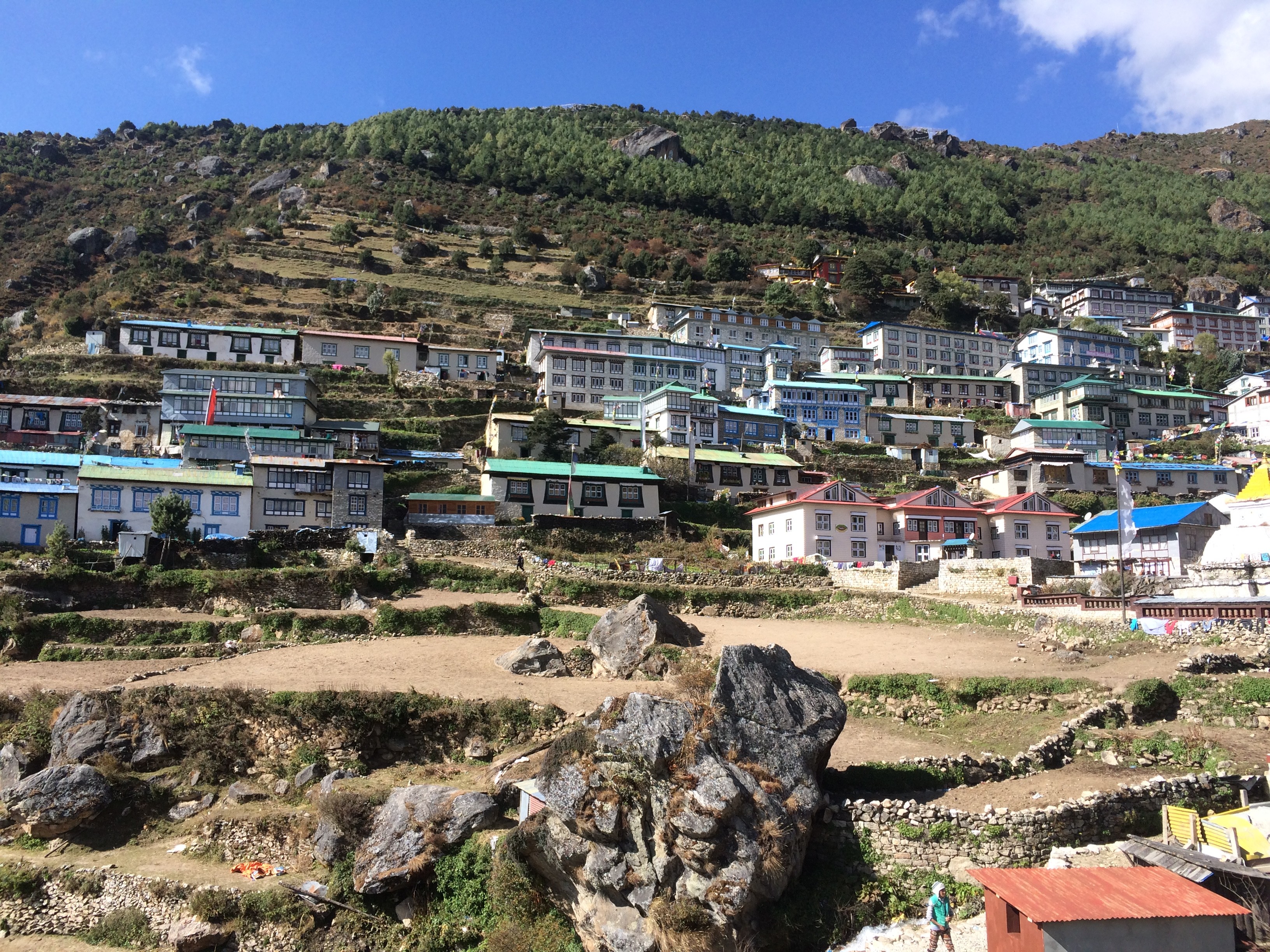
Accommodation Facilities On Everest Base Camp Trek
While you are in Kathmandu you will be kept at three-star hotels by the company.
- In Namche also you can find luxurious hotels.
- You will find accommodation facilities at every step of the Everest Base Camp trekking routes. Mainly you spend your nights in the Teahouse
- In Kathmandu and the lower part of the Everest region, you find adequate accommodation facilities.
When you start to trek towards the higher altitudes the option of accommodation decreases.
The Tea Houses you find on the way will provide you with the basic facilities. They provide facilities like a proper bed with pillows and blankets, proper toilet and bathroom facilities with hot water showers on your request. The hotels and Tea Houses of the Everest region are facilitated with solar or electricity facilities.
Compared with the past the number of Tea House and Hotels has also increased in the Everest Base Camp Trekking routes. The facilities and services provided by the Tea Houses and Hotels have also improved.
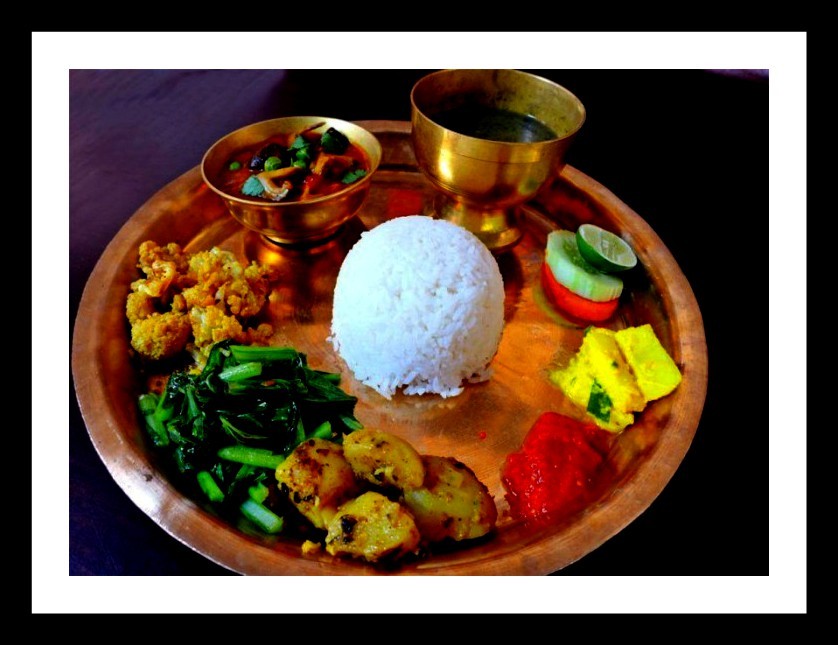
Basic Meals and Food Items Available On Everest Base Camp Trek
The basic meals and food items available during the treks are:
- Breakfast: Bread, eggs, pancakes, porridge, tea, and coffee
- Meals: Nepali food (Dal, Bhat, Tarkari, and Aachar), i.e. boiled rice, lentil soup, vegetables, and pickle
- Other Food Items: Noodles, soups, pizza, spaghetti, pasta, macaroni, momo (dumplings), etc.
- Drinks: Soft Drinks (Coca-cola, Dew, Sprite Fanta, etc.) Alcoholic Drinks (Soft and
Hard)
These are the basic food items available on the trekking routes. In Kathmandu and Namche, you can find the food items you like and want. During the trek, you can find non-veg food items also but you are not encouraged to have those items. Because during the trek you should maintain healthy eating habits so that you don't face any health issues.
Food You Should Avoid During Everest Base Camp Trek
Health is the most important factor for everyone in normal life also but it is more important during the trekking days. If you want to have alcoholic drinks then you can have during the days at Kathmandu Lukla and up to Namche. After you start for higher altitude then it is better not to have alcoholic drinks because higher altitudes have less oxygen in the air. When alcohol is present in the blood, it interferes with hemoglobin's absorption of oxygen it is thought that the effect is magnified. So you get even less oxygen to your brain which may be even riskier to your life.
Talking about healthier food items during the treks consult with your friends and guides where you can find the fresh food items. In the mountain region, there are no proper transportation facilities and goods are carried by people and horses. There is nothing problem with storage for the food items. But with the items like meats and vegetables that can cause problems sometimes. Meat items are stored in freeze and used as it is not possible to butcher the animals every day. So it is better to take precautions and avoid the meat items and have fresh vegetable items during the trekking.
For drinking water, if you have water purifier or purification tablets then you can use the water from natural resources. The hotels and tea house will provide the water from natural resources which the locals drink in free of cost. If you want the mineral water from the packed bottles then you have to pay a certain amount.
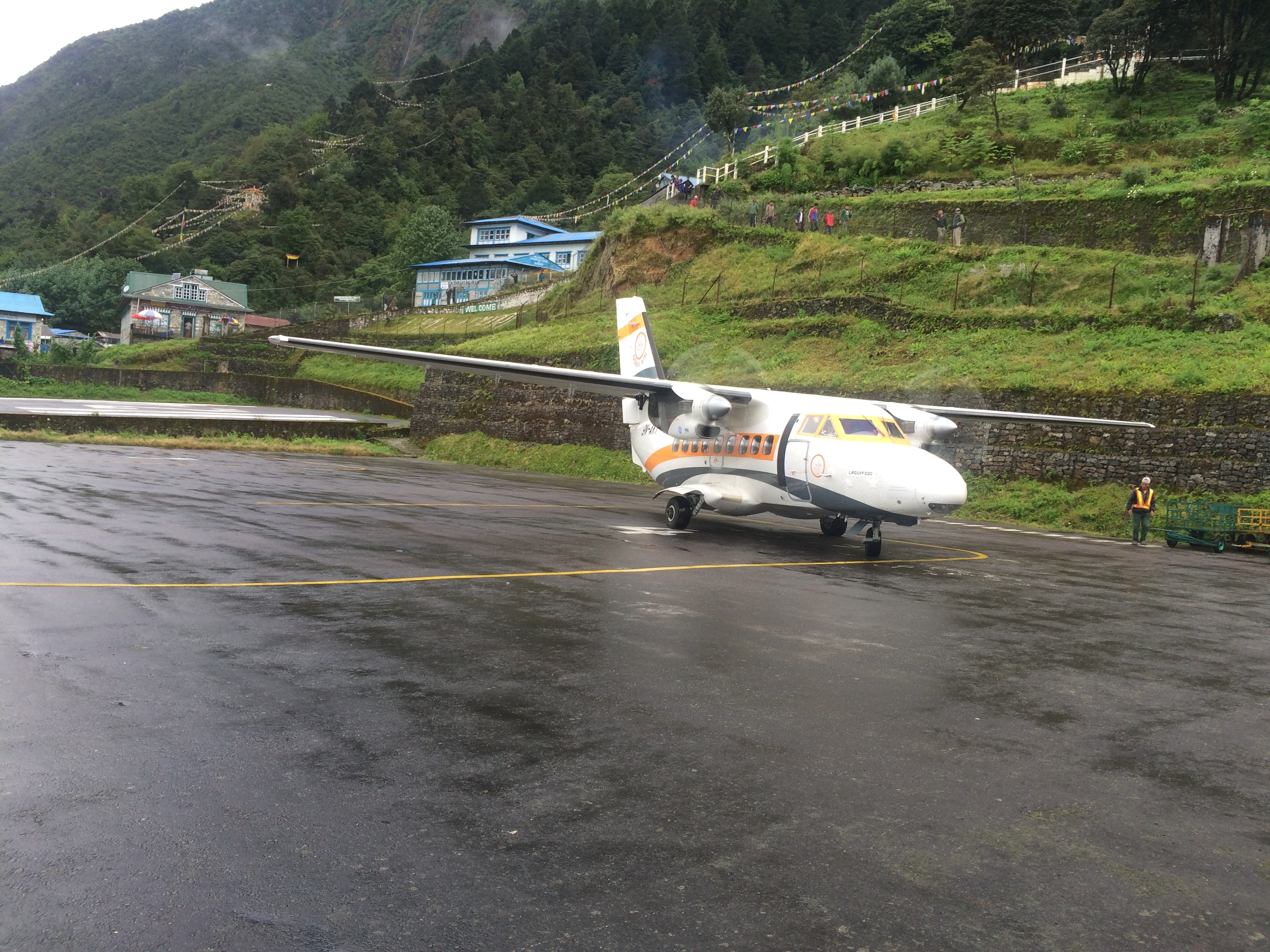
Transportation On Everest Base Camp Trek
After landing in Kathmandu Airport you will be picked up by the company's representatives in a tourist van or private van. While you are in Kathmandu you will roam around in those vans.
You will fly to Lukla via domestic airlines.
In case of emergency during the trek, you can conduct an Emergency Helicopter Rescue
In the Everest region, you can find horses as the medium of transportation.
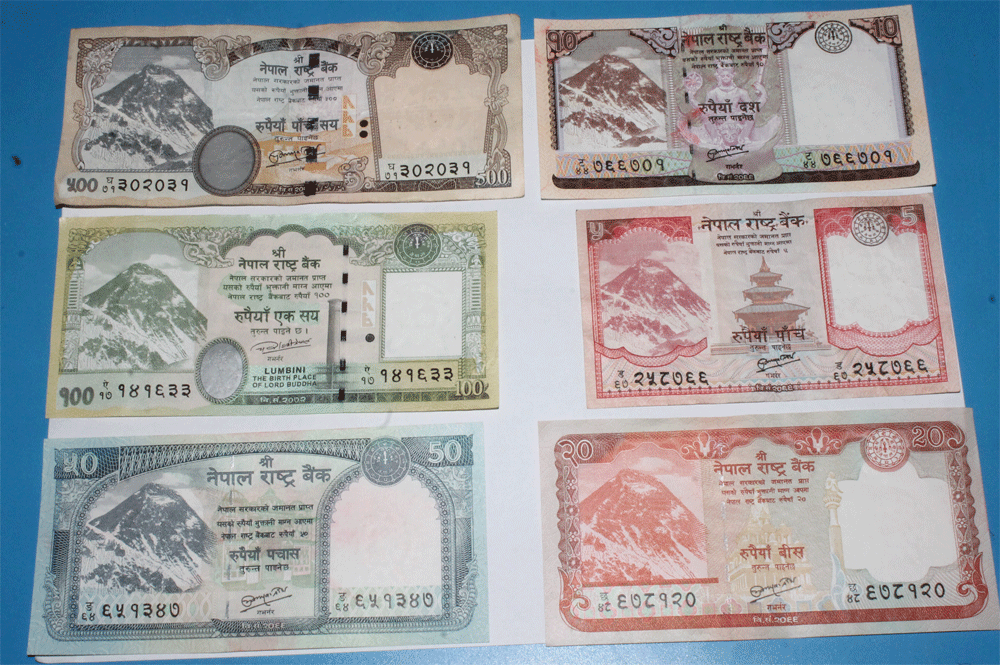
Everest Base Camp Trek Cost
Cost of guide= $30
Potter = $ 25
Trekkers Information Management System (TIMS) = $10
Sagarmatha National Park Fee= $30
Khumbu Village Entrance Fee= $20
Cost of battery charge: $1 to $4 or more as you go higher. The charge will be a bit more if you
charge your laptop and power bank.
Cost of a shower: Starts from$3 to $7 and it will be gas geyser hot shower.
Extra blanket: They will give you somewhere free and somewhere they may charge like $2 to
$4 during the extreme trekking season.
*But if your trekking is organized by the travel company in a package then the cost will be
less than your solo trek
The cost of the food items depends upon the menu what you like to eat and the price increases as
you go higher. Also in the case of mineral water, chocolate, soft drinks and alcoholic drink the price
increase as you go higher.
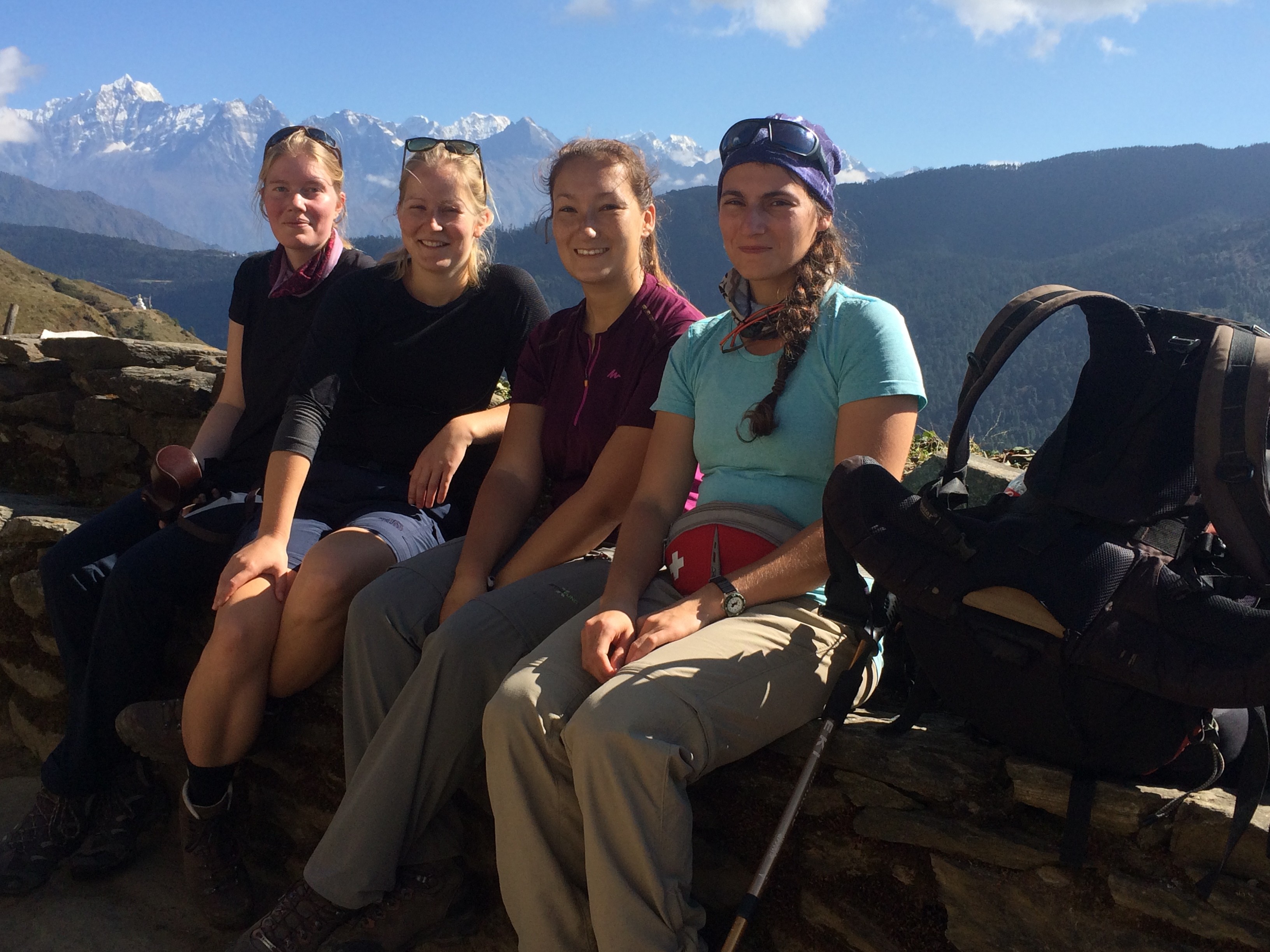
Best Season for Everest Base Camp Trekking
Trekking in Nepal is Possible throughout the year. But looking at the climatic condition all over the country there are mainly two favorite seasons for Trekking in Nepal.
Pre-monsoon: (February, March, April, and May)
Post monsoon: (Late September, October, November, and December)
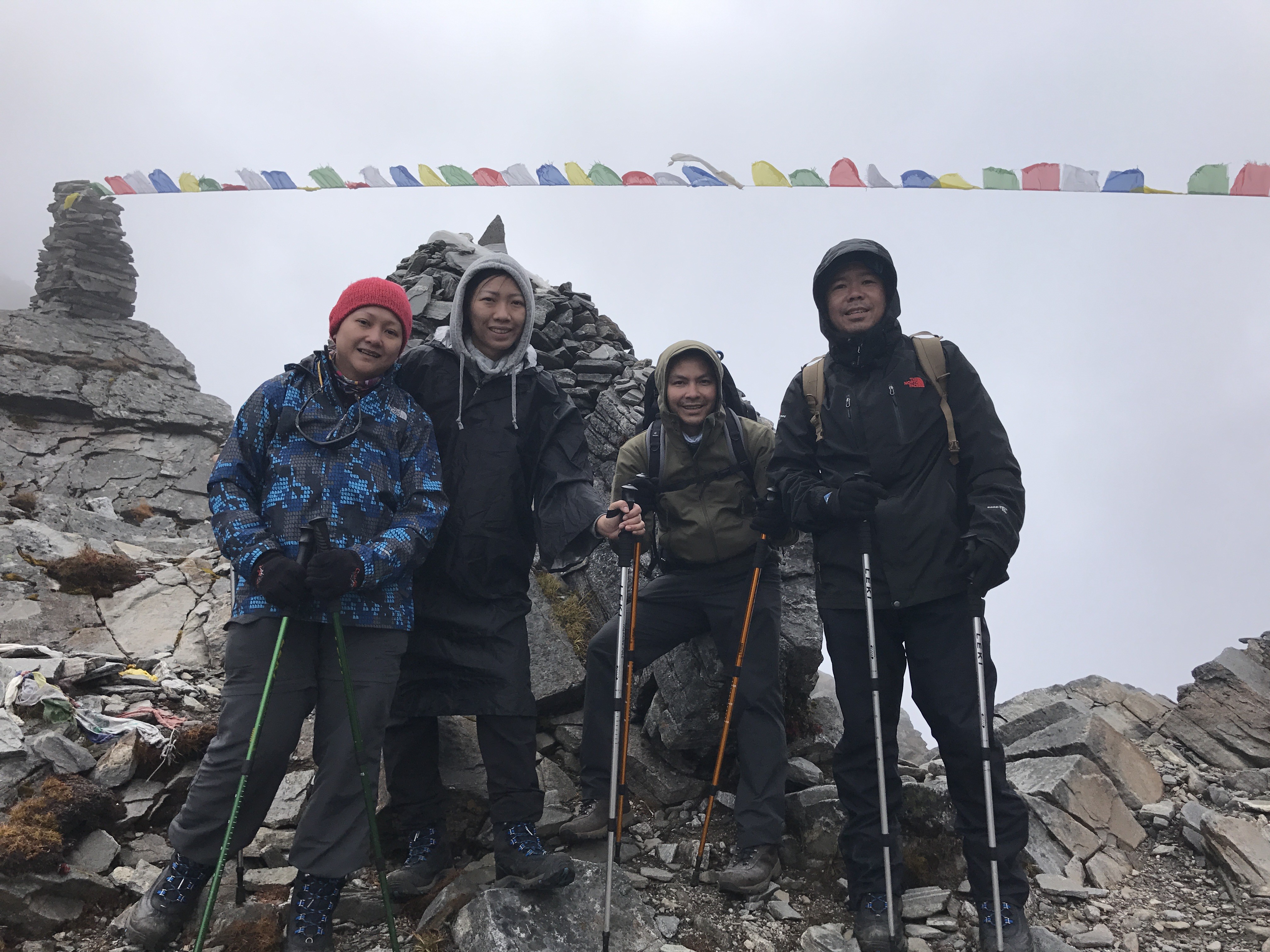
Difficulties/Problems On Everest Base Camp Trek
The various difficulties and problems that may occur during the trek to Everest Base Camp are as follows:
- Difficulties are due to altitude, the landscapes, trekking duration, and lack of adequate information and knowledge.
- If the trekkers go alone without guides they may face problems of communication due to language. They may face accommodation problems in peak trekking season. They may not have the proper information, they may get lost on the way, they may face cost problems, etc.
- Flight problems due to bad weather conditions.
- Network connection problems.

Necessary Items and Gears for Everest Base Camp Trekking
During the trekking, it is necessary to have proper gears. If you do not have proper gears then you will suffer badly. While trekking you should have the gears according to the climatic condition of the country.
List of Item and Gear
- Personal towels, brush, nail cutters
- Medicines: In case if you are using
- Light hat, headscarf or Bandana (multipurpose: can be used as head cover, neck cover
headbands etc.
- A warm woolen hat that covers your ears
- Gloves
- Headlamp with extra batteries
- Sunglasses with UV protection
- Tissue /toilet roll
- Anti-bacterial handwash
- Face and body moisturizer (Sun protection creams)
- Female hygiene products
- Rain Jackets
- Rain Trousers (seasonal)
- Trekking trousers (breathable)
- Shorts
- Quick-dry T-shirts
- Trekking shocks (according to the climate)
- Trekking Boots
- Jackets (Down-goose)
- Fleece jackets
- Thermal sets
- Sleeping Bags
- Gaiters (winter only)
- Trekking Poles (if you need)
- Medium rucksack
- Medical kit (either personal or group leader will carry)
For Climbing
- Climbing harness
- Ice axe
- Crampons
- Mountaineering boots
- Rope
- Snow bar
- Ice hammer
- Helmet (optional)
Stuff of Personal Interest
- Trail Map/Guidebook
- Binocular
- Reading book
- Journal & Pen
- Pencils and small notebooks
- Apart from these items, you can consult with your trekking guides.
If you are traveling through the travel company then they may provide you trekking poles, down jackets and sleeping bag as complementary.

Lifetime Memories In Everest Base Camp Trek
The trekking to Everest Base Camp will provide you the memories of mountains, hills, forests, lakes, glaciers, monasteries, Sherpa culture, and traditions. With the opportunity there come difficulties, you should be aware of those difficulties before you trek and take proper precautions. With proper precautions, your journey will be adventurous without any obstacles in between. If you are trekking with the company and guide then follow their instruction properly. If you are trekking alone then be fully informed and prepared for each and every aspect of the trekking region.
Trek to the Lap of Himalayas through the routes you like, enjoy the adventure and collect the memories. The memories you collect during the trek will be enough for your lifetime. Be fully prepared and take precautions to make yourself safe. If you are safe you can always remember the Everest Base Camp trekking is one the best time spent in your life.
Be safe, enjoy your trek and explore the unexplored in the land of Mount Everest the highest peak in the world.
